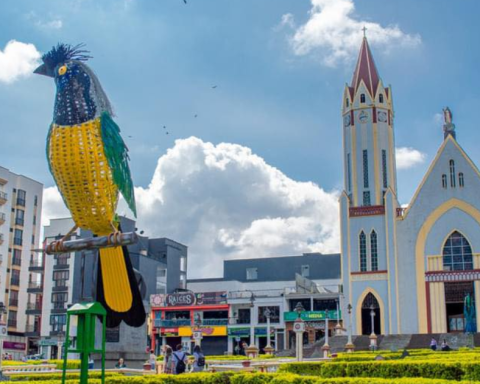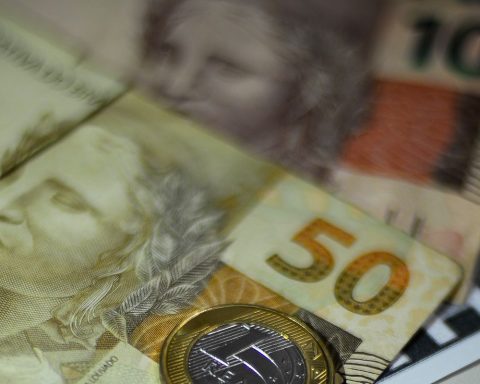The world is experiencing convulsive macroeconomic times. The consequences of the pandemic, such as the disruption of value chains, as well as inflation and the new ingredient of the war in Eastern Europe, dictate the compasses and the course of the portfolios and balances of countries amid heightened fears of a global recession.
(This would be a ‘default’ to the Colombian).
These phenomena are also joined by the uncertainty of political and social changes that countries experience due to particular circumstantial effects, such as the demonstrations of a population against their current rulers.
This is how, for the markets, in their constant assessment of global economies, they have determined which are those countries with the greatest risk of defaulting on their loans, which would cause them to default, a stain that no one will want on their credit resumes.
To date, five countries have already entered this condition: Russia, Sri Lanka, Lebanon, Suriname and Zambia. Regarding the first two, the Eurasian giant failed to cancel its debt bonds by having the funds blocked by sanctions emulating the times of 1918, while the South Asian nation faced this default for the first time in its history in May of this year after unleash its worst financial crisis that led to the flight of its president and the establishment of a new government.
But beyond these emblematic cases, the list of countries that could enter this condition is increasing for, in addition to the reasons mentioned, the increase in the price of money as a result of the continuous rises in interest rates throughout the world.
(USA, on the verge of ‘default’: what happens if you don’t pay your debt?).
The gaze is now on a list prepared by the Bloomberg agency on those countries with the highest risk of default.
In the ranking of 50 economies, ranging from the highest risk to the lowest, eight Latin American countries are among the top 25 positions, the riskiest.
In general terms, the countries involved in a possible default would add more than US$237,000 million in payments that could not occur.
The economic agency’s ranking composes a score based on four variables: government bond yields, five-year credit default swap spread, interest expense as a percentage of GDP, and public debt as a percentage of GDP.
Thus, the first ten positions of the list go as follows: El Salvador, Ghana, Tunisia, Pakistan, Egypt, Kenya, Argentina, Ukraine, Bahrain and Namibia.
The Central American territory tops the list for its high levels of total government debt and higher interest spending. This last indicator is around 4.9% of its GDP, which is “relatively tall” for the experts.
Secondly, the outstanding debt of the Central American government is equivalent to 82.6% of its GDP.
In addition, the fact of having legalized bitcoin as legal tender and of having issued bonds in this unit has triggered the risk of the country due to the drag on the value of the cryptocurrency so far this year.
(Will a ‘default’ in Venezuela increase emigration to Colombia?).
In the case of the following African countries, their placement on the list is explained by their high levels of debt in terms of GDP and their limited access to foreign currency to meet their payments.
The second Latin American country to appear on the list is Argentina, which is in diatribes about the agreement signed with the IMF and its instances to comply with it, in order to cancel the entity’s loan delivered in 2018 of US$45,000 million.
In this July, Argentina has reinforced the dialogues with the IMF for this purpose.
Among the indicators of the Argentine portfolio that weigh on the ranking is the level of government debt, which is 74.3% of GDP.
Behind the South American country is Ukraine, one of the belligerent countries. The scenario of a possible control of Russia, although it has not happened, raised the risk of a default and, therefore, their value falls and their yield, which goes in the opposite direction, rose to 60.4%, the most high among the 50 categories of the list.
Among the following boxes for the region are Brazil, Costa Rica, Ecuador Mexico, Peru and Chile.
There is also Colombia, which, although it is in the last positions (23 out of 25), still adds to the list of countries with a high risk of default.
AND HOW IS COLOMBIA?
The country appears in position 23 among the 25 positions in the first part of the list, so the risk of default is limited.
According to the document, Colombia’s debt is 60.6% of the country’s GDP, while its bond yield is 7.3%. Your interest expense is 2.9%. The credit default swap spread in this case is 259.
Brazil (11), Ecuador (19), Dominican Republic (21) and Mexico (25), they also appear in the first part of the ranking.
While, Uruguay (29), Panama (32), Guatemala (38), Peru (42) and Chile (46) occupy the best boxes in the second part of the list.
ROBERTO CASAS LUGO
















